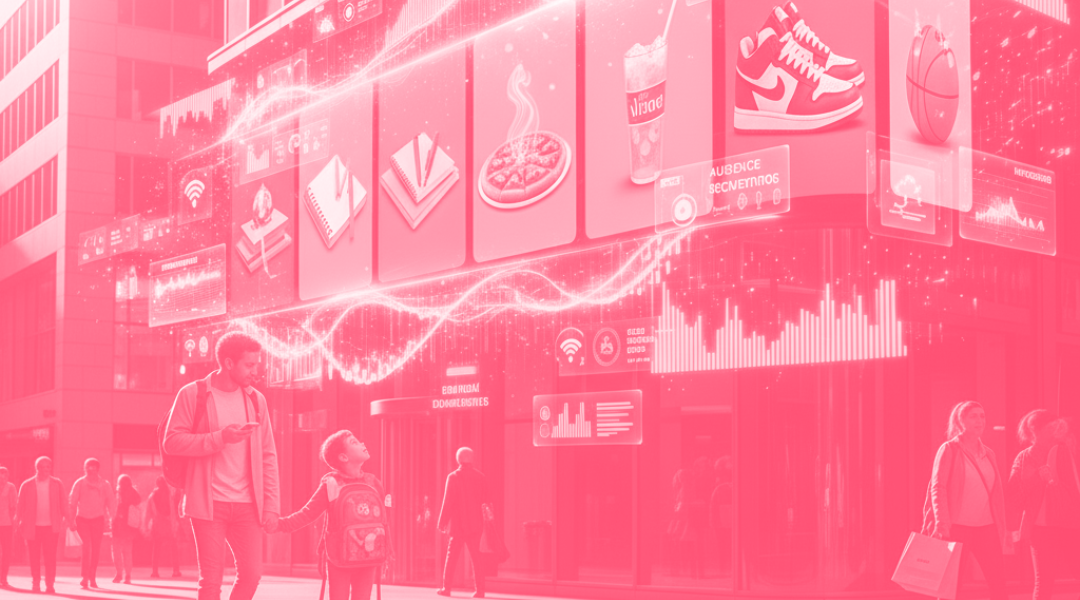From backpack to shopping cart: how programmatic advertising drives the shopping season
September is not just back to school: it’s the return to routine, recurring expenses, and new goals. While brands compete for attention in a...
Plan, activate and control media to hit targets with precision.
Turn data into smart decisions with advanced analytics and modeling.
Efficiency, governance and scale for agencies and teams.
![[Ebook] SEO + AI: eBook to Master AI Overviews and GEO](https://www.adsmurai.com/hubfs/MKT%20-%202025/WEB/Resources%20-%20Banners/HeaderEN_Ebook_SEO+AI.png)
[Ebook] SEO + AI: eBook to Master AI Overviews and GEO
Learn how to structure and distribute your content so generative models can understand it, trust it, and reuse it in their answers. A practical guide to compete and appear in AI Overviews and AI-powered assistants.
Discover more
Buying advertising space in media is key for any business. Because, of course, if you're not in the right place, what's the point of having the best ad in the world? There's nothing like ensuring your target audience has the opportunity to see that message, even if by accident.
Now, to find that perfect space where your ad stands out at a reasonable price, there are several options. One of them is programmatic advertising, which is gaining popularity due to its numerous advantages. Let’s see what it is, how it works, and why it is becoming a key option for many businesses today.
TABLE OF CONTENTS
Programmatic advertising is a model for buying and selling advertising space. These spaces are acquired automatically through the intersection of relevant data for brands. For example, audience data, the most powerful platforms, or bidding for advertising spaces. It aims to establish a native advertising strategy by executing a solid advertising plan in Social Ads or creating experts within the Google Ads display network.
The main benefit of this advertising model is displaying ads that align with users' interests. This allows brands to connect with their target audience at the right moment and in highly relevant locations (for example, during a listening session on Spotify).

Like any transaction, the buying and selling process of these advertising spaces involves two parties:
Before diving into the details of how programmatic advertising works, we have prepared a glossary with key concepts you need to know if you decide to include programmatic advertising in your digital strategy.
SSP (Supply Side Platform): This is the platform that represents sellers during the buying and selling process. It gathers and offers the inventory of advertising spaces from publishers or media outlets.
DSP (Demand Side Platform): This is the platform that represents advertisers. It allows them to purchase available advertising spaces from publishers. Think of it as a centralized media service that operates through real-time bidding (RTB).
Ad Exchange: This is the marketplace where purchases are optimized, and transactions for advertising spaces are completed after winning DSP bids. It serves as the convergence point between SSP and DSP.
Data Partners or DMP (Data Management Platform): These entities provide relevant user and audience data to the DSP. This information includes demographics, user journeys, cookie data, etc., and is crucial for determining which advertising spaces to bid on.
Ad Server: This technology distributes ads across advertising spaces. It functions as the logistics and distribution service for ads purchased in the marketplace or Ad Exchange.
Understanding how this advertising model works is not a simple task. As you’ve seen, many players are involved in programmatic advertising. Below, we explain the simplified process.
Programmatic advertising operates through intelligent algorithms that continuously learn. These algorithms match available advertising spaces on online media (SSP) with the data representing the audience that an advertiser is targeting for their ads.
For the ad space purchase to be completed, advertisers must buy ads in real-time through digital bidding (DSP).
The ad space is awarded in the Ad Exchange to the highest bidder—the one willing to pay the most to have their ads displayed via Ad Servers to users with the desired profile.

Thanks to data-driven algorithms, users are exposed to ads more aligned with their interests in real-time. At the same time, advertisers can improve their ad interaction and conversion rates.
Programmatic creativity enables the use of data-driven creative strategies to deliver highly personalized, dynamic, and contextually relevant advertising content to users.
Programmatic creativity is the approach of combining advertising creativity with technology and programmatic advertising automation. By leveraging data-driven insights and automation, programmatic creativity is revolutionizing how brands communicate with consumers.
It allows advertisers to tailor their messages, visuals, and calls to action based on real-time user information, such as demographics, browsing behavior, and location. Programmatic creativity ensures that each ad is customized to the preferences and needs of each user, leading to increased performance, engagement, and conversion rates.

Marketers can benefit from combining advertising automation, data, and creativity to enhance the performance of their display advertising.
Creative management platforms enable advertisers to have a diverse set of creatives for any situation they need. This allows creatives to be adapted to audience segments to ensure message relevance and the ability to update and test these creatives.
With CMP design, the entire process is optimized for speed and scale. Ads are designed in multiple sizes simultaneously, countless variations are quickly created, and file sizes are automatically optimized to reduce load times and improve visibility.
CMPs are appealing to creative, production, and advertising operations teams looking for agile ways to manage programmatic creative campaigns. The platform nature of a CMP is also attractive to marketing organizations aiming to consolidate efforts into a centralized platform and reduce agency costs.
Programmatic advertising enables dynamic creative optimization, where ad content is personalized in real time based on user data. This personalization allows creative teams to deliver highly relevant and engaging ads to individual users. By leveraging DCO, creative processes involve creating ad templates with multiple creative variations that can be dynamically assembled to match the specific characteristics of each user. This level of personalization enhances user experience and increases engagement and conversion rates.
In digital advertising, transparency and data quality are fundamental pillars for the success of any campaign. In the context of programmatic advertising, where automation and precise targeting are key, these two variables become even more critical. However, historically, programmatic advertising has faced criticism regarding transparency and data quality.
Digital advertising faces several significant challenges concerning data usage. These challenges not only impact campaign effectiveness but also raise ethical and legal concerns that must be addressed comprehensively.
These challenges highlight the critical need to address privacy, transparency, and data security in digital advertising. By proactively and ethically tackling these issues, advertisers can ensure the effectiveness of their campaigns and maintain consumer trust in the digital ecosystem.

September is not just back to school: it’s the return to routine, recurring expenses, and new goals. While brands compete for attention in a...

Imagine that traditional outdoor advertising, those static billboards you've been seeing for years, have decided to go digital and transform into...

Programmatic advertising has become an indispensable element of digital advertising. Creating an effective programmatic advertising strategy is key...